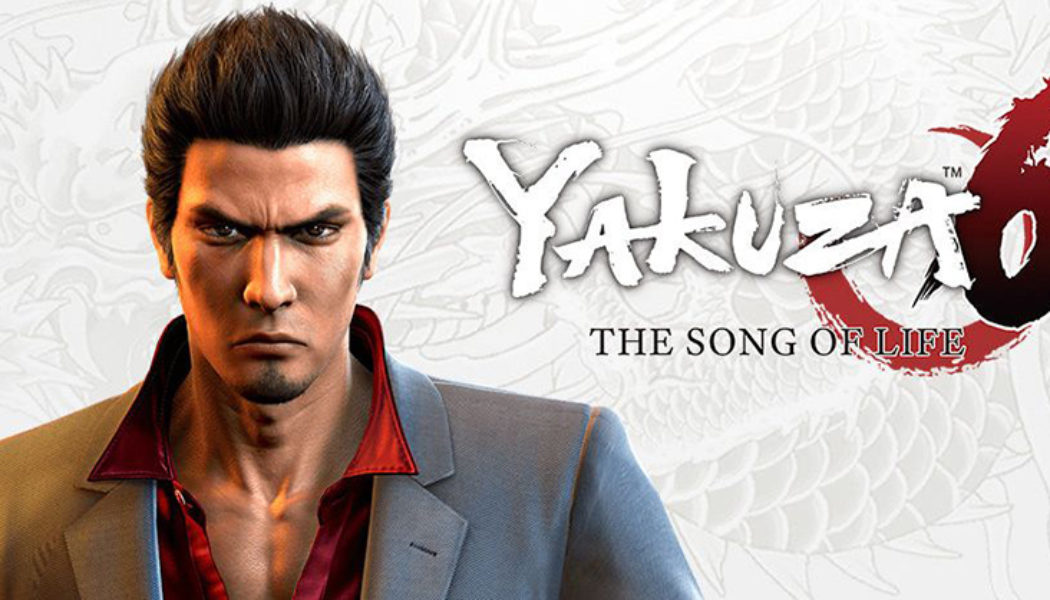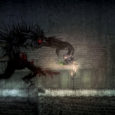The Yakuza series started back in 2006 for all of us here in the West. Twelve years later, the game is putting out its sixth numbered entry and wrapping up the entire Kazuma Kiryu saga. The legacy of this series is steeping in memorable characters and most importantly, good storytelling. Yakuza 6 takes twelve years of lessons learned and combines them into one ultimate package, creating an outstanding finale.
Yakuza has been at the forefront a lot over these last couple of years. With the series prequel Yakuza 0 and the Kiwami remakes of 1 and 2, it’s an excellent time to get into the series. Even if you refuse to put in the numerous hours it would take to complete the whole series, newcomers will find themselves very informed with the characters and world of Yakuza. Thanks to the assortment of flashbacks, previous game synopsis via the game menu, set ups, meet and greets and what-have-yous, the game will do everything it can to keep new players up to date with the story as a whole. Now of course if you are a returning fan you will get a much more elevated experience, having intimate knowledge of the previous games. Don’t let the number fool you though, this is a fine place to start up your adventure with Kazuma Kiryu.
Strap in for long, dialog heavy cutscenes. Every few steps you make, and every bit of progress is bookended by lots and lots of exposition. Not that we’re complaining! Newcomers might be thrown off a bit but longtime fans will feel right at home. Think Metal Gear Solid length cutscenes here – the kind where it’s just better to put down the controller and enjoy the show while you get wrapped up in the game’s incredible narrative. Familiar faces will pop up, and while not every cast member gets big moments, I never felt cheapened by the omission or lack of some of my favorite supporting characters from previous games. Story and characters are always at the forefront of this series, and The Song of Life is no different. The focus on narrative may feel slow to some, especially in the early hours of the game, but there is a lot to set up and explain before the real meat of the adventure begins. Those excited to put a hurt on people, will need to practice a bit of patience as they work their way into some of the more consistent action.
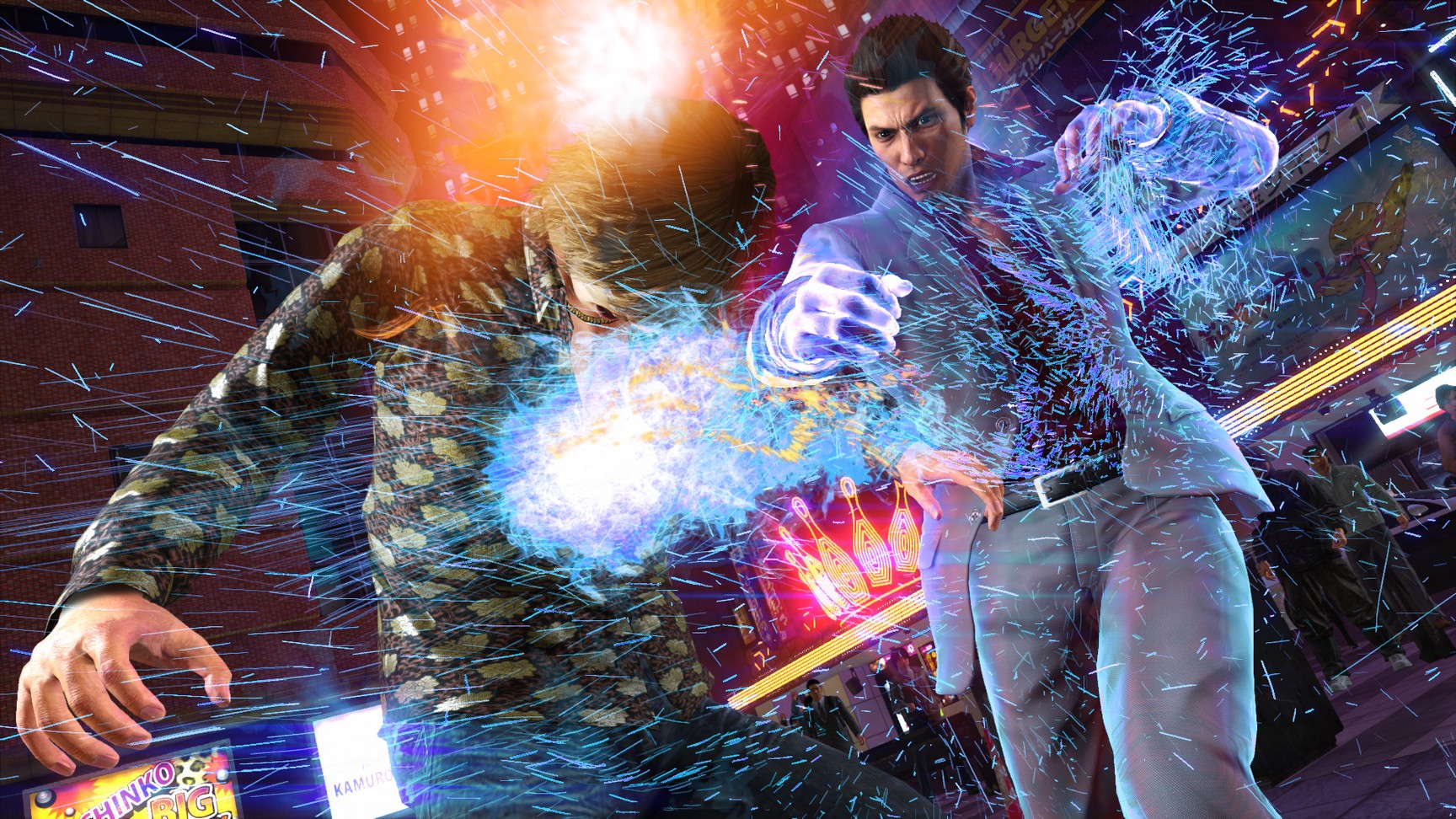
Graphics are obviously the best they have ever been in Yakuza 6. Sure, it might fall just short of other open world games from this generation, but the character models are a real standout. Even patrolling around the city at night can be a great visual feast, as the neon signs of Kamurocho reflect off the streets. Character animations are good as well, as a nice natural feeling is given off as character talk, walk, converse, and interact with one another.
Coming back to the city of Kamurocho is always a treat since we’ve been stomping around on these grounds for 12 years now. While reusing locations and assets are considered negatives in most games, in Yakuza 6 this works and is most welcomed. Kamurocho is Kiryu’s home, so the familiarity the city brings works well with player immersion. The passing of time has changed Kamurocho in many ways. Sure buildings may be where they used to be, but new shop locations keep the player exploring as things are as modern as ever. Playing Yakuza 0 and playing Yakuza 6 offers two very different versions of Kamurocho, despite it being the same city, and is a true example of how time morphs all things.
Modernizing everything as time passes is a theme in the Yakuza story, mechanics, and aesthetic. Gone are the scattered phone booths and in turn, the archaic saving system that goes along with it. Now you’ve gotten with the times and have a cell phone with a generous autosave system. This really streamlines the game as when you are winding down with your playthrough, you don’t need to worry about how close a save point is. The save point is always in your pocket for you to manually save or the autosave feature will kick in upon almost every time hitting the “start” button.
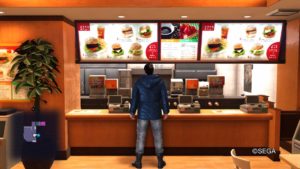
Eating and drinking are as important as ever now. These mechanics have always been in previous games, but now it’s a big way to get experience points. Pairing multiple combinations of things on the menu will give you increased boosts of experience. A lot of my money went to spending on food, and finding the right combos was fun, as I monitored my hunger meter. You don’t ever starve or go hungry and the game does not require you to eat, but there it is much fun to be had by going into new restaurants, seeing what they serve, and trying to get the most out of your money. To deplete your hunger meter, you just need to run around and fight. It is pretty easy to nab a meal after every encounter, thus maximizing your experience gained.
Experience can be used in five different categories, with each category unlocking new skills and permanent buffs. Choosing how to shape your character and what to spend points on is up to you, but don’t be surprised if you have everything unlocked after your run time of the game. You also have control over a few item slots. As you buy and pick up wearable items, you can equip them to further increase specific stats. I found changing things around in my inventory made some fights much easier. Don’t worry too much about it though, because the difficulty, like other Yakuza games, is very low.
Substories are back, and in plentiful amount. The Yakuza series has always done a great job at committing to a balancing act of extreme goofiness along with the drama of a real soap opera starring hardened gangsters. One moment you are fulfilling a mission that has some emotional payoff, the next you are fighting ghost pirates in a cemetery. It’s all very surreal. It has to be a hard line to walk because I never feel like my immersion breaks while doing some of the more sillier tasks. Everything feels like it belongs in this world.
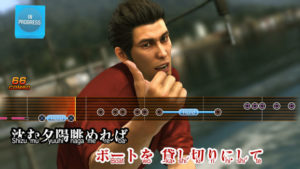 There are so many other side activates to do as well that will distract you from the main adventure. Karaoke is back, going to a cat café, visiting shrines, having a drink with friends, shark hunting/fishing, and of course, working out at the gym, putting a baby in a good mood, are some of the things you will find throughout the world. The main plot may be the priority but you always have time for a small detour in one of these many side attractions.
There are so many other side activates to do as well that will distract you from the main adventure. Karaoke is back, going to a cat café, visiting shrines, having a drink with friends, shark hunting/fishing, and of course, working out at the gym, putting a baby in a good mood, are some of the things you will find throughout the world. The main plot may be the priority but you always have time for a small detour in one of these many side attractions.
We also get a gang creator. You will be recruiting and locating an assortment of gang members to join you in a new mini game. It functions like a tower defense game in that you are populating troops by expending points that you gain from actions or over time. It is a good time waster but it is not the most engaging mini game in the Yakuza series. Leveling up troops was simple but fun. I still found myself wasting a few hours with it, so something about it kept keeping me coming back! Watching your troops level up, and putting them in the right chain of command was rewarding. I will say that there was one other mini game I found that was just outright strange. There are online chat rooms with babes to fake talk to, and these mini games are awkward and weird. You spend time doing button prompts (quick time events) while talking to a real (live actor) lady who may or may not be stripping. Thanks Japan!
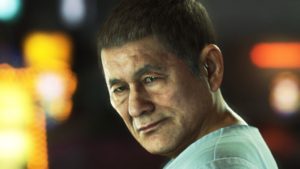 One of the biggest takeaway for me was the inclusion of actor, director, and icon, Beat Takeshi. You may know Takeshi Kitano from other Yakuza films or TV (unrelated to this game). His major works are: starring in Battle Royale, and directing the movie Brother, among many others. Beat Takeshi offers a very memorable character in the game’s narrative, and every time he came on screen it made me forget I was playing a game, and trick me into thinking this is one of his MANY Yakuza movies.
One of the biggest takeaway for me was the inclusion of actor, director, and icon, Beat Takeshi. You may know Takeshi Kitano from other Yakuza films or TV (unrelated to this game). His major works are: starring in Battle Royale, and directing the movie Brother, among many others. Beat Takeshi offers a very memorable character in the game’s narrative, and every time he came on screen it made me forget I was playing a game, and trick me into thinking this is one of his MANY Yakuza movies.
The story in Yakuza 6 The Song of Life here revolves around one of Kiryu’s children going missing. Kiryu oversees an orphanage in which he is responsible for many kids. The narrative begins with one of the children leaving the orphanage and losing contact. Kiryu, hot off of being in jail, must track her down. This leads him back to a Kamurocho which is now overran by Triad who are going to war with the local Yakuza. These events drag Kiryu back into his old life, and guides him towards a new location, Onomichi in Hiroshima. This somewhat simple mystery turns into a complex narrative with an third act that pays off in some very big ways. Longtime fans of the series will get one of the best endings any game series has ever had, and leave you fulfilled in every way. Few games in the industry can claim such a feat.
The overarching themes of fathers and son, and what parents are willing to do for their children as well as what children are willing to do to gain acceptance and approval from their parents, are powerful and meaningful. These themes give the game’s narrative much life and weight. The different types of relationships shared between all the parents and children showcases a world of gray morality. alongside this, it juggles a tale of old versus new. Kiryu is an old school Yakuza, from a different time, and things have changed within the organization. These changes and this younger guard who are taking over, act as another driving force in the narrative. Time again has changed something we once knew, morphing it into something unfamiliar.
Yakuza 6 feels better than ever. I suffered from zero crashes, and if I witnessed any glitches I was unaware of them. I did not suffer from much, or any framerate slowdown. The loading screens are minimal and short, really keeping you engaged and in the world. The combat itself is smooth and putting the hurt on people never gets old. You feel pretty powerful at the start of the game, so by the end you are practically a one man army. Gone are playing with other characters, and swapping your fighting style. While these may seem liek steps back, it actually focuses the mechanics and the story, and keeps you right in the shoes of Kiryu. All of the fighting and exploring are complimented with a great soundtrack. Lots of guitar riffs over synthy harmonies fits the tone well, but it is not unlike previous entries. I will say a particularly jazzy inspired song in the new area of Onomishi is a great standout.
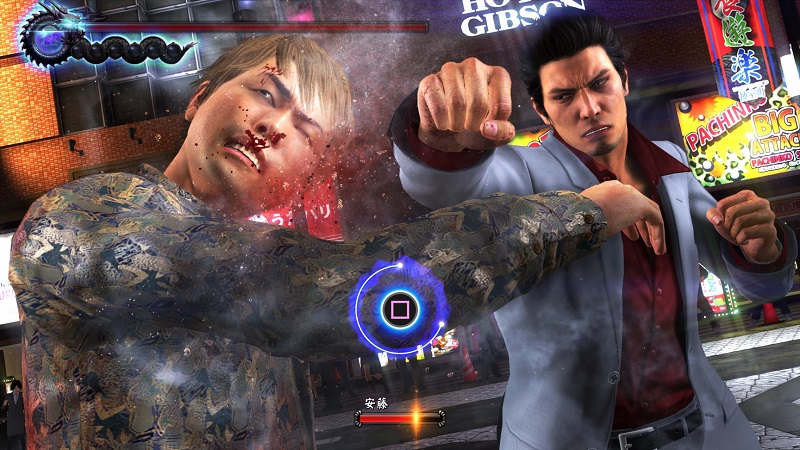
Yakuza 6 The Song of Life ended up being about a 21 hour experience for me. I did plenty of side stuff and it felt like I took my time. This run time makes the game feel much shorter than previous titles, but be aware that there was easily 10 more hours of side content for me to get into. Despite being plenty distracted there was much I did not get to see or experience, which will make going back into this world all the more of a treat! There is so much being left unsaid about Yakuza 6. The game is wrapped up in an incredible mystery that unravels like a piece of infinite yarn. I always wanted to know what happens next, and no point ever felt like a good stopping point. Yakuza 6 does the impossible and wraps up things in such a satisfying way, that I felt I got everything I could out of these characters and out of the narrative. Twelve years is a long time to stick with the same cast of characters, but no moment ever went wasted, each acting as its own puzzle piece to the greater narrative of the series. You won’t find a more consistent quality series, anywhere else in the industry.


